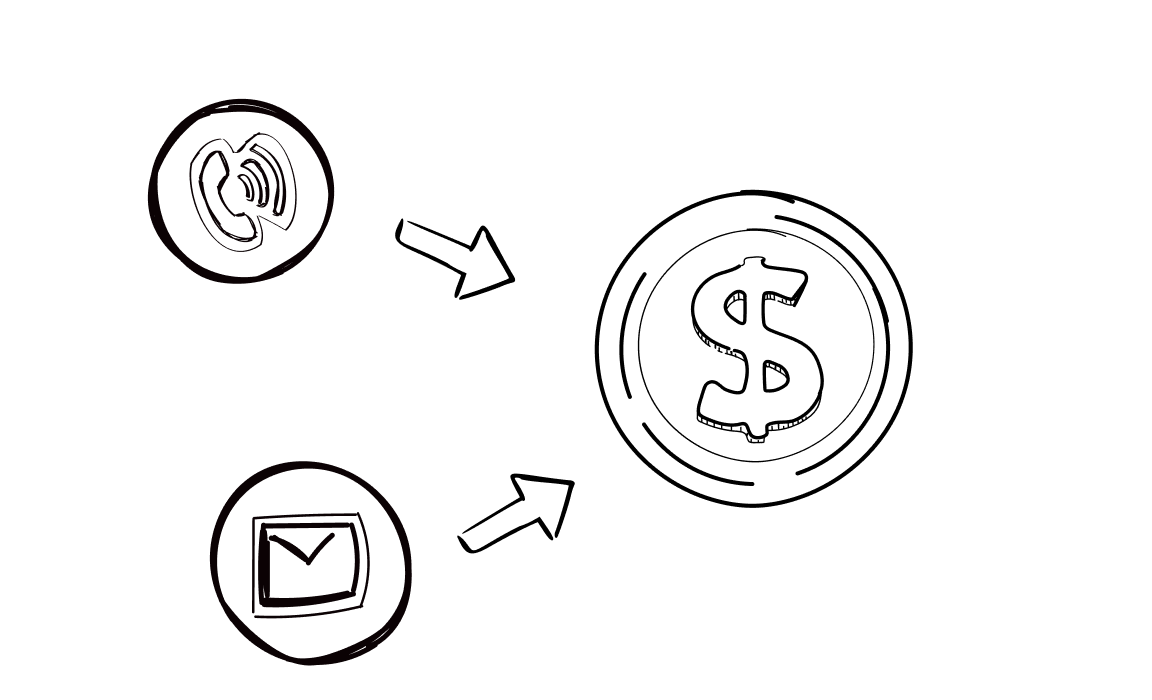Sales isn’t easy – there’s no one-size-fits-all solution or magic formula to close deals. It’s a process that takes time, patience, and plenty of practice.
Mistakes are part of the journey, teaching you what works and what doesn’t. If you’re looking for shortcuts, there aren’t any.
But here’s the good news: while sales is complex, you can simplify the process by understanding how the sales engagement process works.
Take the time to learn the steps and benefits of a structured sales engagement process to make room for growth.
Let’s explore how understanding the process can transform the way you sell.
What does sales engagement mean?
Sales engagement is the connection between sales teams and prospective buyers during the sales process. It’s creating authentic interactions that build customer relationships and drive buying decisions.

For example, you can craft a message that speaks directly to your prospect’s needs instead of sending a generic email. That’s one of the personalized sales engagement strategies.
The typical sales engagement process structure
Creating genuine connections between sales teams and reps requires time and effort, but it will eventually pay off when done right.
Here’s how such a process should operate.
Prospecting
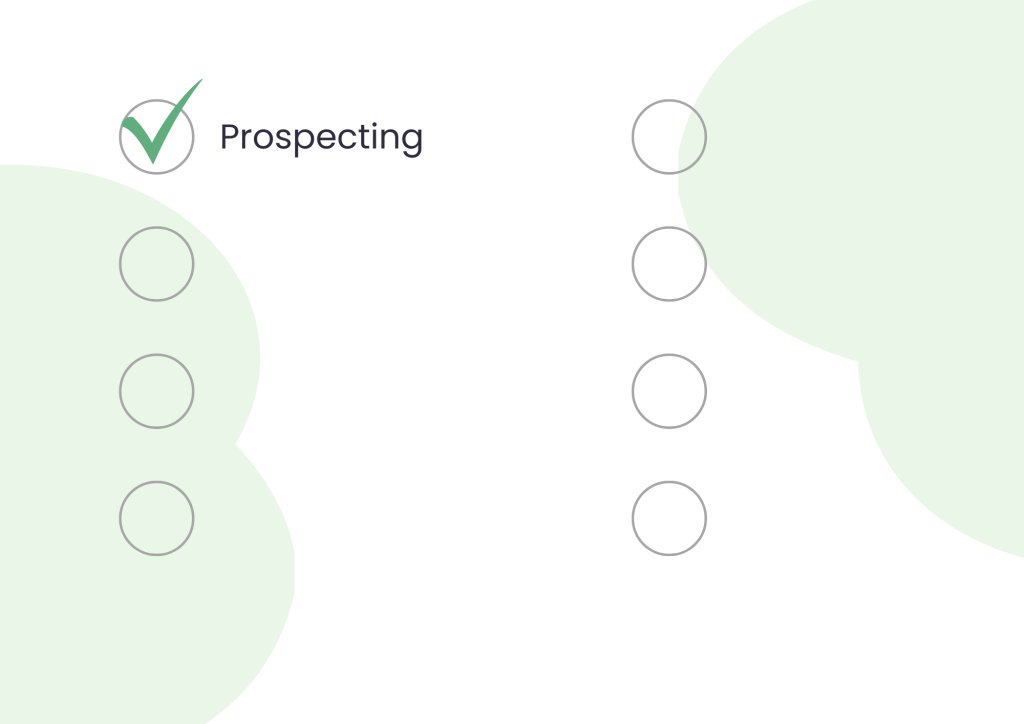
Prospecting is where the customer journey begins. It’s about finding the right people in your target market and connecting with them effectively. LinkedIn is popular but crowded, so you should explore less saturated platforms as well. Look for prospects on niche forums or industry-specific websites.
To grab attention, mention a relevant case study that shows how your product helped a similar company. Tailoring your message to the recipient’s role also boosts relevance. CEOs and managers have different priorities, so your communication should reflect that.
Experiment with different approaches, analyze past results and adjust your strategy based on what works. Prospecting takes practice, but with a thoughtful approach, you can start fruitful conversations and set the stage for successful sales.
Outreach
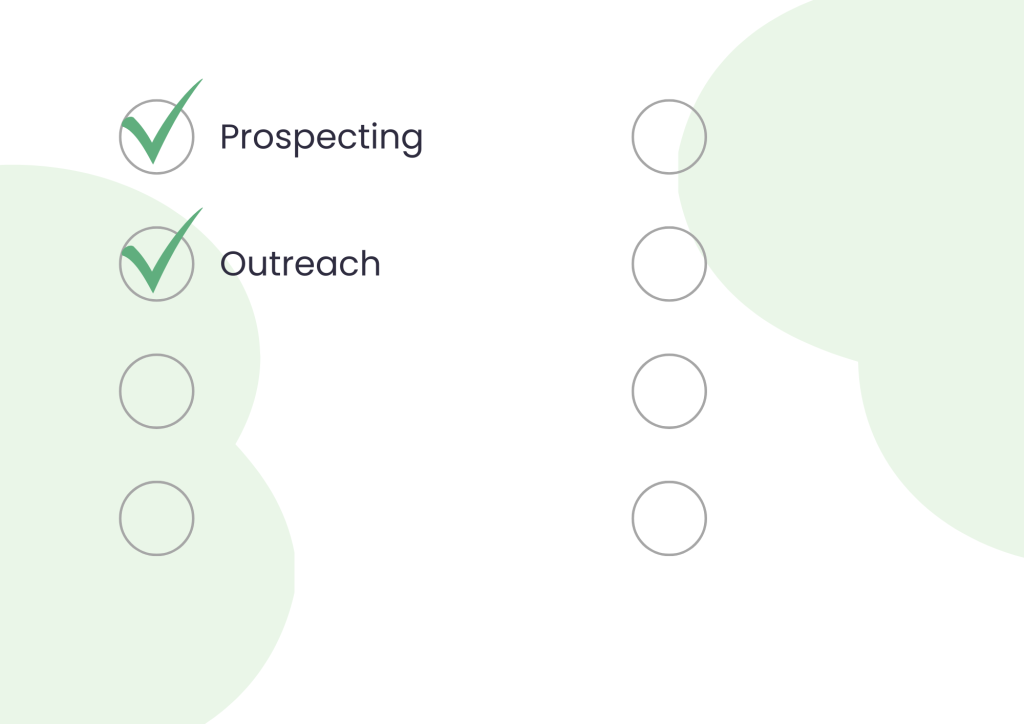
Outreach is the next step in the sales engagement process. It’s how you connect with prospects through sales outreach across multiple channels like email, social media, and phone calls.
Then, you make your message stand out while keeping communication consistent and relevant. You can track interactions and tailor your approach for each prospect. The good news is that you can automate your outreach with sales engagement platforms like Woodpecker.
Qualification
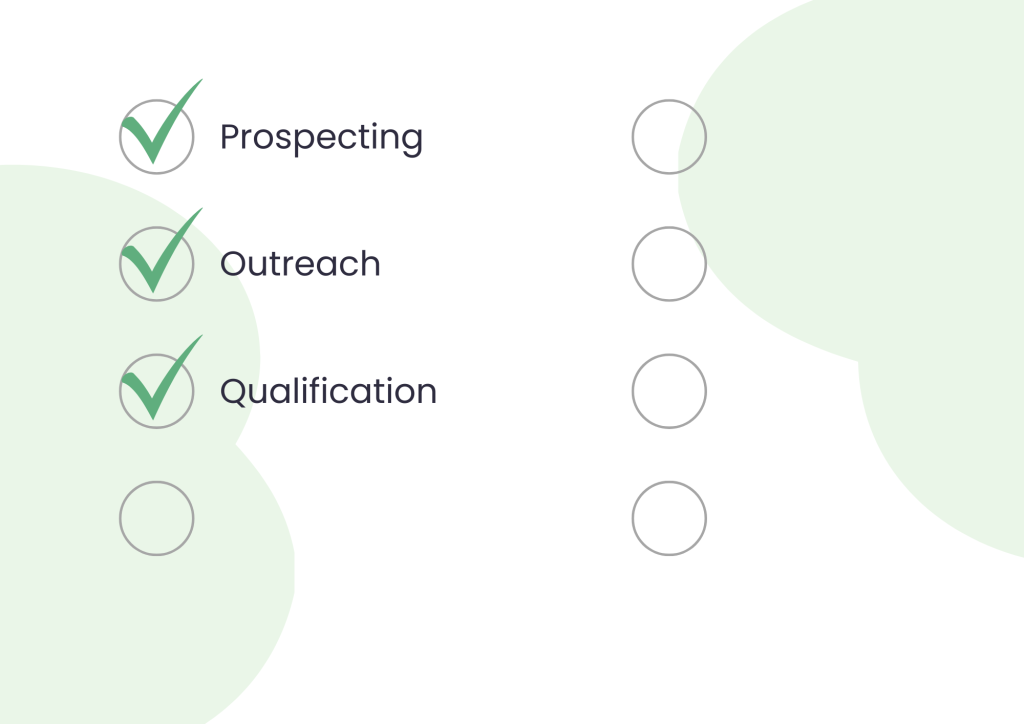
When qualifying, you pinpoint potential customers who are a great fit and uncover their pain points. You can determine if a prospect is ready to move forward by asking the right questions and focusing on lead nurturing. But mind that not every prospect is a perfect fit, even if they seem to match your Ideal Customer Profile (ICP).
Pay attention to signals. Evaluate how prospects respond. If follow-ups go unanswered after a few tries, they might not be ready or interested.
Likewise, if a prospect is only interested in pricing or keeps postponing decisions, they may not be the best fit for your product. Monitoring behavior, like attending scheduled calls or staying engaged, can signal their intent.
Read more here: How to Qualify Your New Sales Leads? 5 Signs that a Lead Isn’t the Right Fit.
Presentation
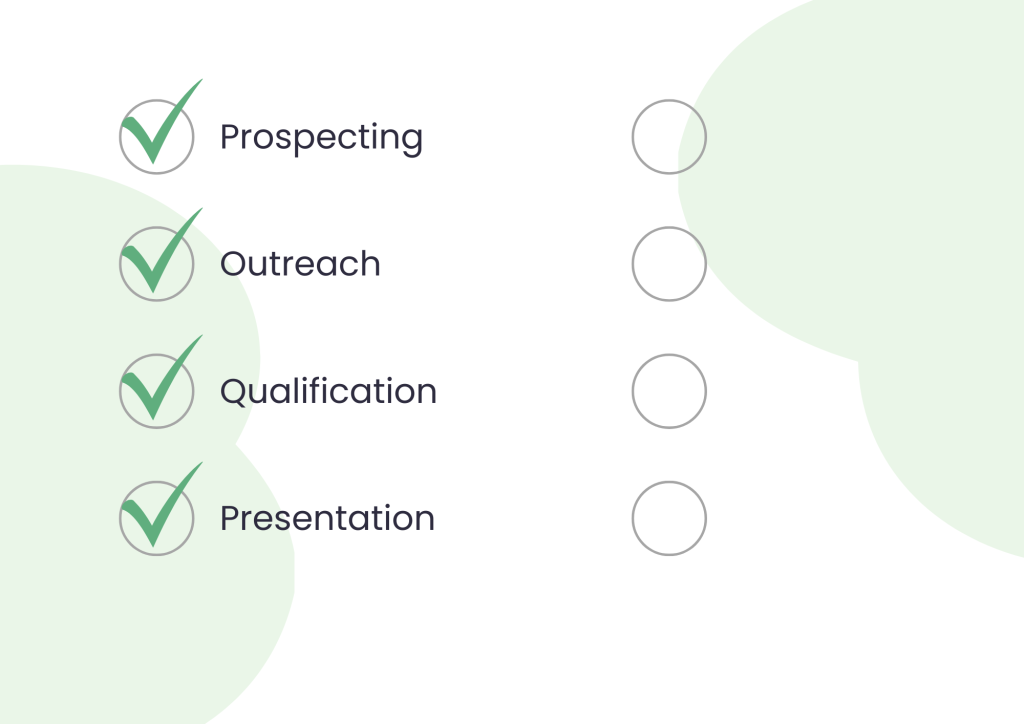
Presentation is your chance to deliver impact. Through tailored sales plays and sharp content management, you can showcase the value of your solution.
Social media becomes a powerful tool, helping you engage decision-makers and reinforce your messaging. A solid presentation informs, motivates action, and builds confidence.
- Webinars: Host interactive sessions to demonstrate your solution and address questions in real-time.
- Email campaigns: Share case studies, product videos, or detailed guides tailored to specific prospect needs.
- Live demos: Provide hands-on experiences that showcase your product’s capabilities and relevance.
- In-person meetings: Build trust and rapport through face-to-face interactions for more complex deals.
- Video content: Use personalized or explainer videos to simplify concepts and engage visually.
- Customer success stories: Share testimonials and case studies to highlight real-world value.
The right mix of channels allows you to reach a wide range of audiences and keep engagement high simultaneously.
Handling objections
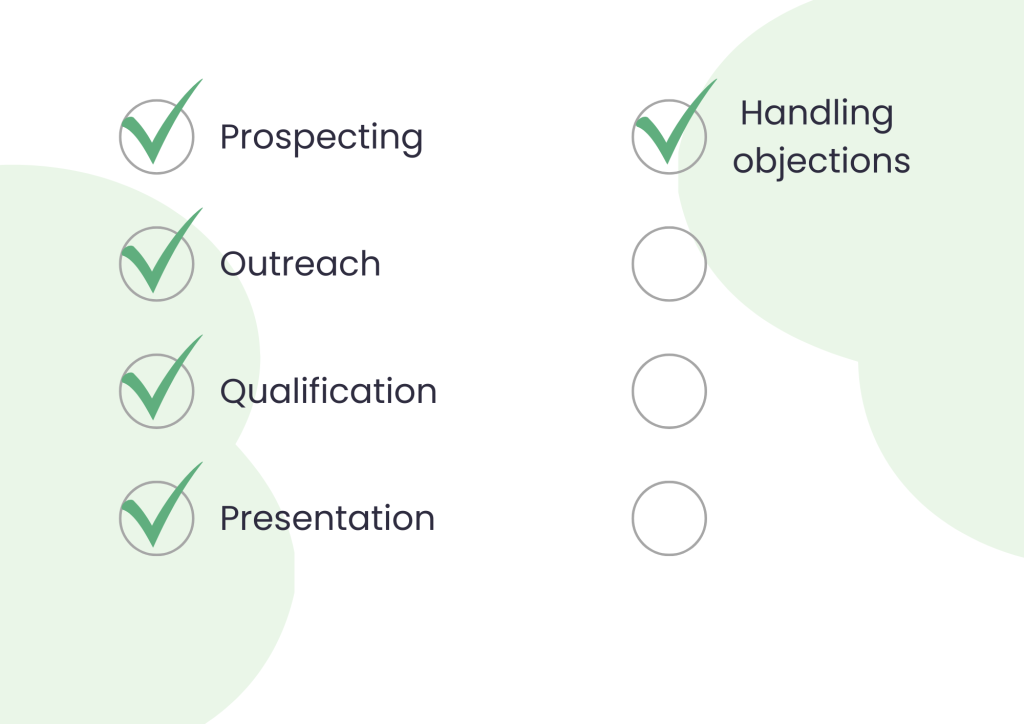
Objections aren’t roadblocks – they’re opportunities. Sales reps must listen, ask the right questions, and respond with clarity to address concerns. Using a sales enablement platform helps you stay prepared with data, resources, and tailored responses that build trust.
You turn doubts into confidence. By blending engagement and sales enablement, reps can keep the conversation on track and strengthen the connection with the prospective buyer.
Proposal
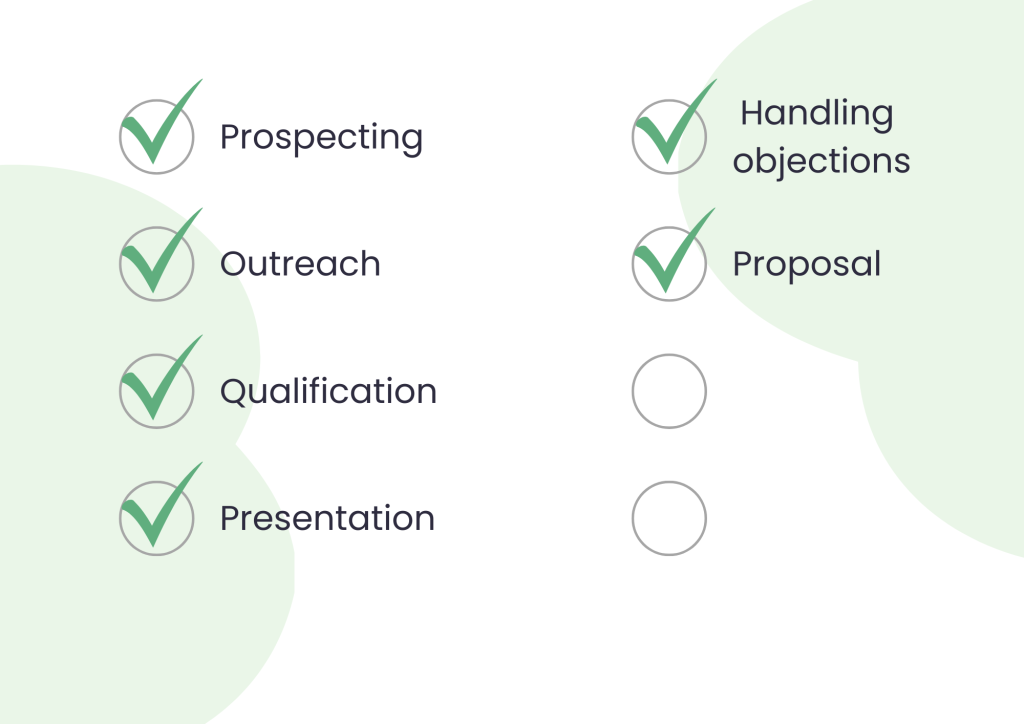
A proposal is your sales strategy in action. It is a stage where you present your tailored solution to the prospective buyer. Every proposal should highlight how your solution fits their needs, making it easy for them to see a successful partnership.
Closing
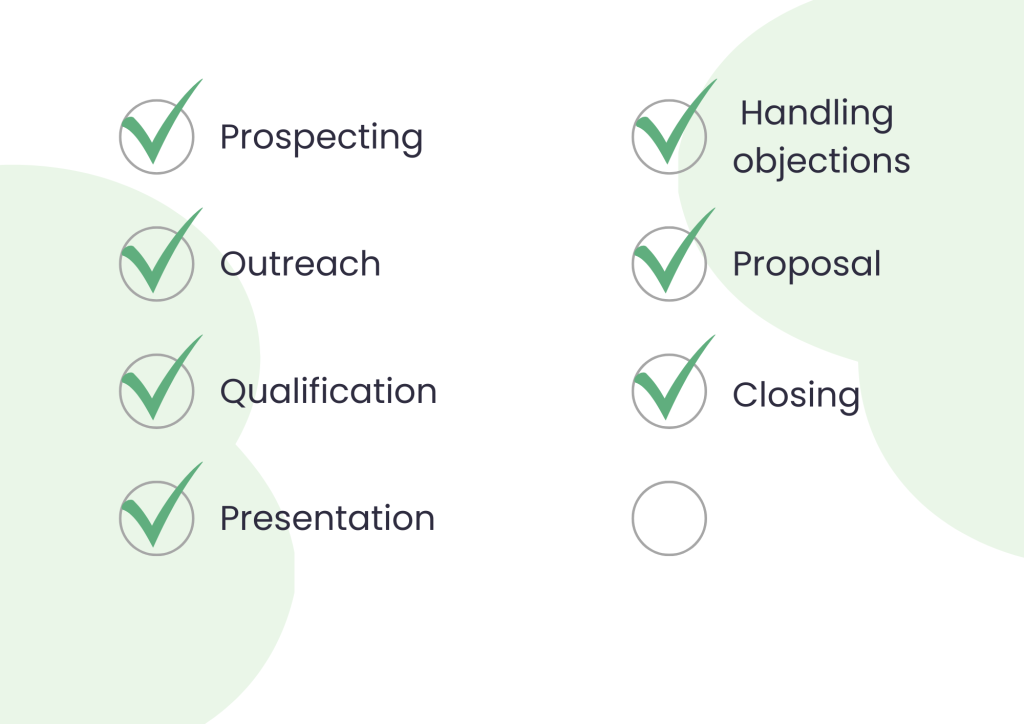
The closing stage is where deals move from discussion to decision. This is the critical point in the sales pipeline where you guide prospects to take action. A closing process focuses on addressing any last-minute questions and providing reassurance. You create a stress-free path to securing the deal.
Follow-up
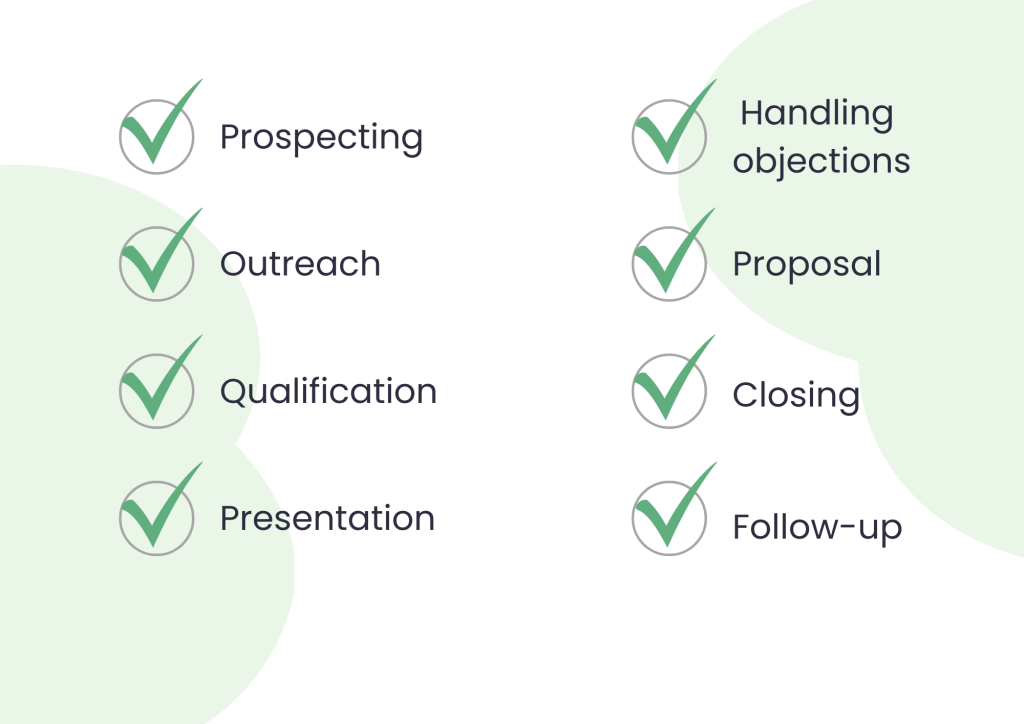
The follow-up stage ensures the relationship doesn’t end at the sale. For sales leaders, focusing on customer success and building better customer relationships is a key opportunity. Follow-ups show your commitment to delivering value beyond the initial deal.
Tools like Woodpecker streamline this process, helping you send personalized emails, schedule timely check-ins, and nurture ongoing connections.
Read how to craft effective follow-up emails.
The benefits of an effective sales engagement process
Now that you know how the process works, let’s explore the benefits an effective sales engagement process can bring to your business if implemented correctly.
Improved sales efficiency
With sales engagement technology, like Woodpecker, teams can simplify their workflows to spend more time on what matters. Automation opportunities like scheduling, organizing data, and tracking progress streamline repetitive tasks, saving time and reducing errors.
By optimizing sales operations, you can create a more seamless process that allows your team to concentrate on building connections and closing deals. This results in a faster, more productive sales cycle that drives consistent results.
Better lead conversion
Not every person you reach out to will be ready to buy immediately. That’s where a structured approach to lead conversion comes in. When you understand what a lead needs and when they need it, you can tailor your communication to guide them toward a confident decision.
Sales engagement platforms help by tracking every interaction, showing which leads are interested and which ones might need more nurturing. Automation steps in to send follow-ups at the right time so you stay on their radar without being pushy.
When you prioritize clear communication, personalized outreach, and consistent engagement, you make it easier for leads to trust you. This trust moves them from “just curious” to “ready to buy.”
Improved customer experience
Your customers want a smooth, personalized experience whenever they interact with your business. When every step of the sales process is hassle-free – from the first conversation to post-purchase support – you build trust and loyalty.
For example, when running a campaign where your follow-up email is triggered only if a prospect clicks a link in your initial email. This click-based condition lets you customize the next step, offering deeper insights or solutions based on their interest.
Increased revenue
Increased revenue starts with stronger sales performance. As your team uses dedicated sales engagement software, they become more productive. The software automates repetitive tasks, tracks leads and ensures every opportunity is followed up. Your team spends more time selling and less time on admin work.
Better sales scalability
Scaling sales is growing your ability to handle more leads and customers while organizing processes. An intense sales engagement process lays the foundation by streamlining workflows and focusing efforts where they matter most.
This might include creating clear strategies, improving team collaboration, or refining how leads are managed. As your sales volume grows, having these systems in place ensures you can expand without losing track of opportunities or compromising quality.
Better sales metrics and insights
Getting better results starts with better data. A sales engagement platform gives you detailed insights into your sales processes, showing you what’s working and where there’s room to improve.
Sales managers can track team performance and make smarter decisions. Having clear metrics allows sales professionals to focus on strategies that drive results.
If you want to take it a step further, look at what’s happening outside classic sales tech. Many modern businesses are starting to adopt AI-powered process optimization systems in their operations—platforms that go beyond tracking and actually help teams identify patterns, forecast trends, and make smarter decisions automatically. While these advanced systems e.g., a solution for industrial process optimization) are common in manufacturing and logistics, the underlying idea is catching on in sales too: use real-time data, let AI surface key insights, and empower your team to respond faster and smarter.
As more sales engagement tools begin adopting AI-driven features, you can expect even deeper analytics and actionable recommendations to become part of your daily workflow.
Improved alignment across teams
When sales teams and marketing work together, everything flows more smoothly. Using a sales engagement strategy, you ensure both teams align their goals and messaging. Marketing creates content supporting the sales journey, which sales can leverage to close deals.
For example, a sales engagement platform makes collaboration easy by centralizing information and communication.
Reduced CAC
Acquiring customers can be expensive, but it doesn’t have to be. You can lower costs by focusing on sales engagement tools and targeted sales processes.
How? Automation takes care of repetitive tasks like follow-ups and data entry, freeing up your team to focus on high-value leads. At the same time, these tools help your team prioritize the right prospects so you’re not wasting time on leads that are unlikely to convert.
Improved sales predictability
A sales engagement platform tracks every journey stage, giving sales managers and teams a clear view of what’s coming next. With structured sales processes and actionable data, you can confidently forecast results.
Sales engagement refers to more than just making connections – it’s creating a repeatable strategy that helps teams anticipate outcomes and stay one step ahead.
How Woodpecker can help your sales engagement process?
Are you juggling emails, follow-ups, and lead tracking, hoping to engage your audience without losing your edge? In other words, do you need to streamline your sales engagement process immediately? That’s where Woodpecker comes in.
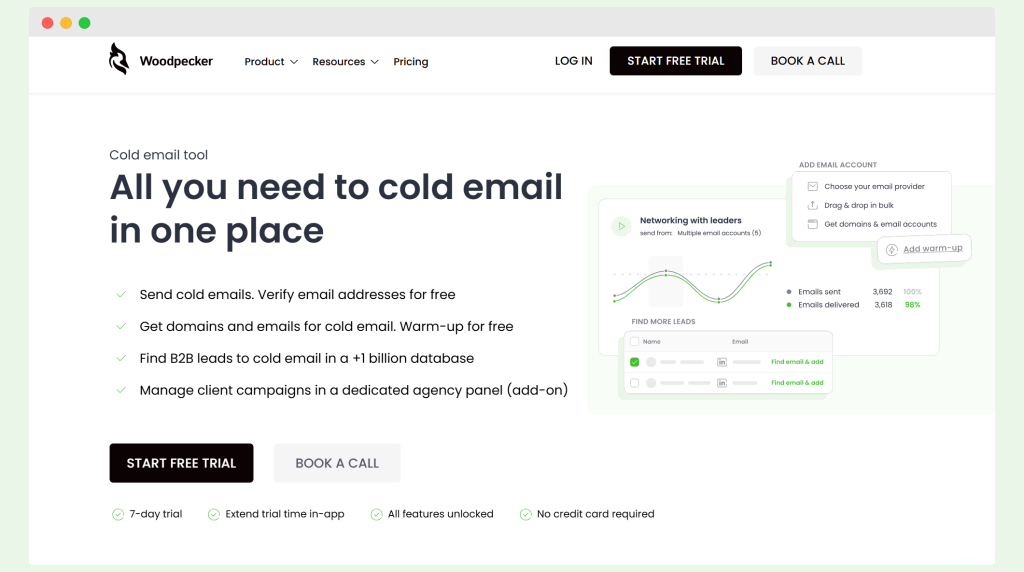
Woodpecker is a sales engagement tool that simplifies outreach while maximizing results. Instead of manually handling every email or follow-up, the platform takes over with features like adaptive sending and in-thread follow-ups, ensuring your emails feel personal and land in the right inboxes.
With Woodpecker, you get more than just automation – you get intelligence. Its AI-driven tools analyze key metrics, optimize email timing, and detect interest levels. For instance, the built-in AI interest level detection sorts replies by how engaged your prospects are, helping your sales team prioritize the hottest leads without wasting time.
It provides also:
- deliverability monitor,
- spam word detection,
- domain audits
- randomized sending frequency
- inbox rotation
Woodpecker ensures your emails don’t end up flagged or ignored.
But Woodpecker doesn’t stop there. It empowers your sales team to expand beyond email. Using multichannel outreach, you can combine LinkedIn tasks, emails, and calls into one seamless strategy.
Need to adapt mid-campaign? No problem – Woodpecker’s condition-based campaigns let you switch gears instantly based on lead behavior. And let’s not forget AI Video, which lets you include personalized videos in your emails, capturing attention like never before.
It’s a lifesaver for scaling teams. Whether you manage multiple clients or accounts, the Agency Panel keeps everything organized in one place, offering one-click logins and custom tracking domains.
Conclusion
A solid sales engagement process helps your team connect with potential customers and turn those connections into lasting relationships. Each step, from prospecting to follow-ups, is critical in building trust and keeping conversations moving forward. When your team follows a structured approach, they can stay organized, deliver the right messages, and close deals more effectively.
With tools like Woodpecker, this process becomes even easier. It handles repetitive tasks like sending follow-ups, tracking engagement, and analyzing prospect behavior, so your team can focus on what matters – building relationships and closing deals. Woodpecker ensures your outreach feels personal, keeps leads engaged, and helps your sales team work efficiently.
Want to make your sales engagement process smoother and more successful? Try Woodpecker today!

